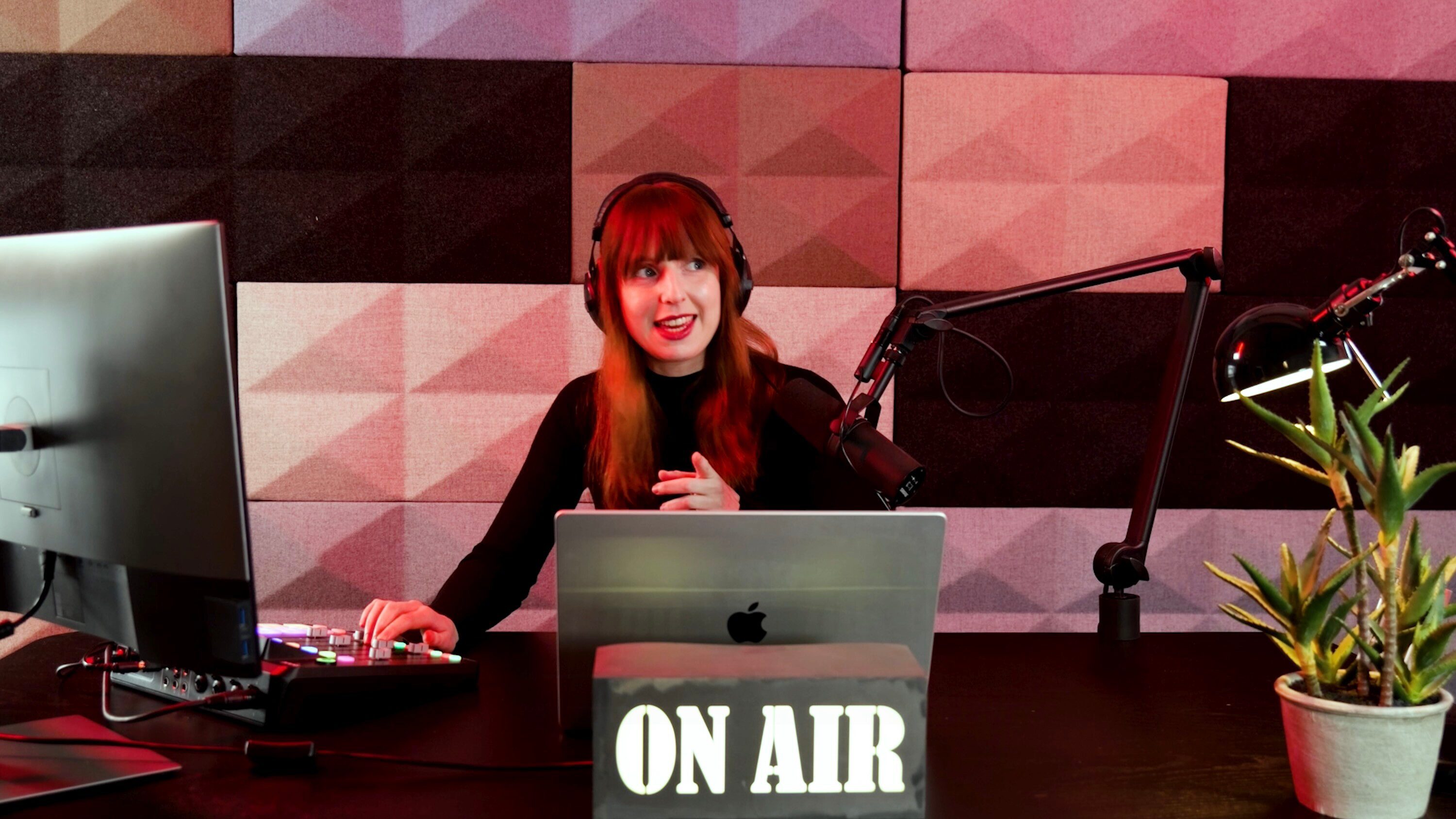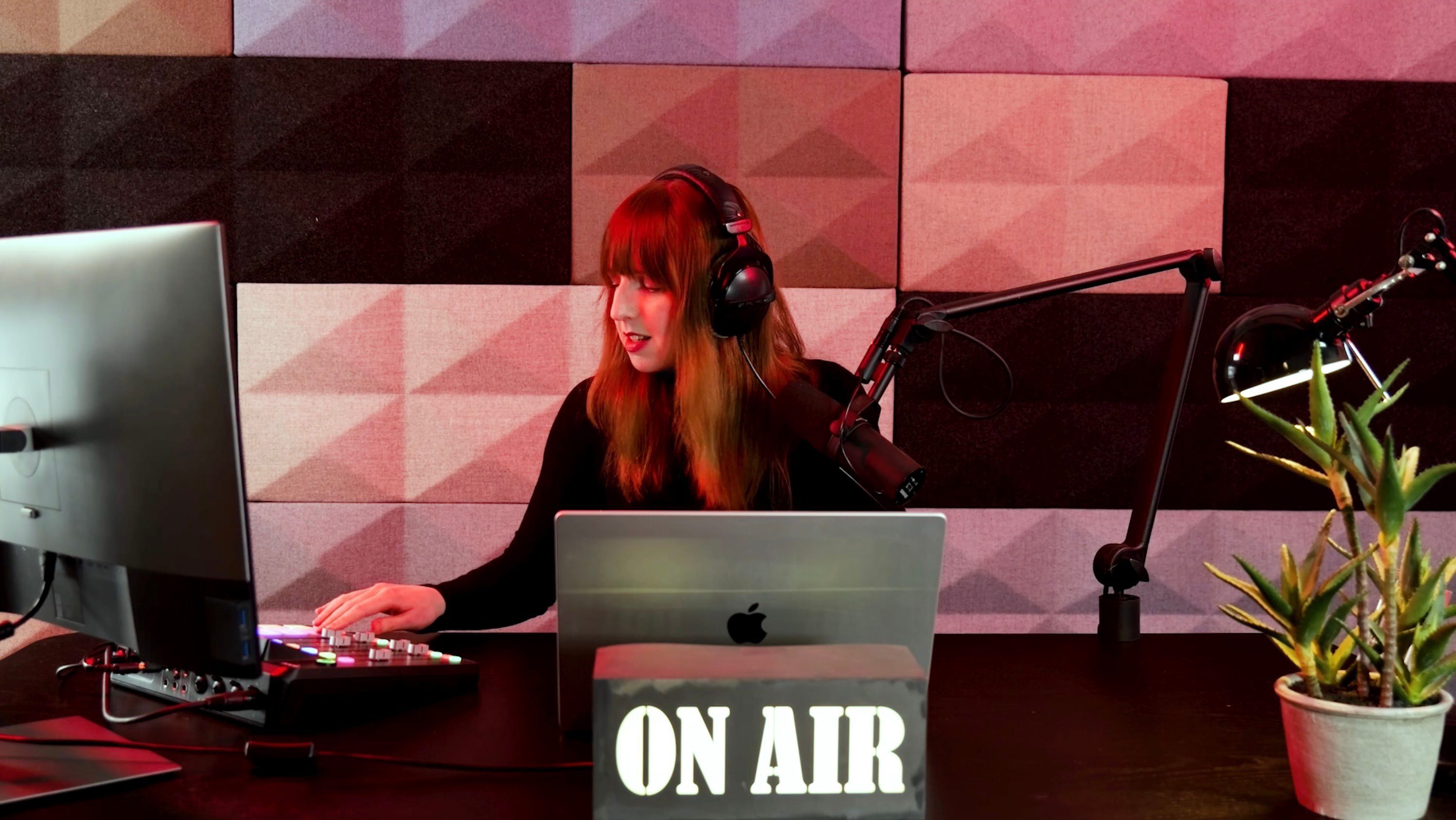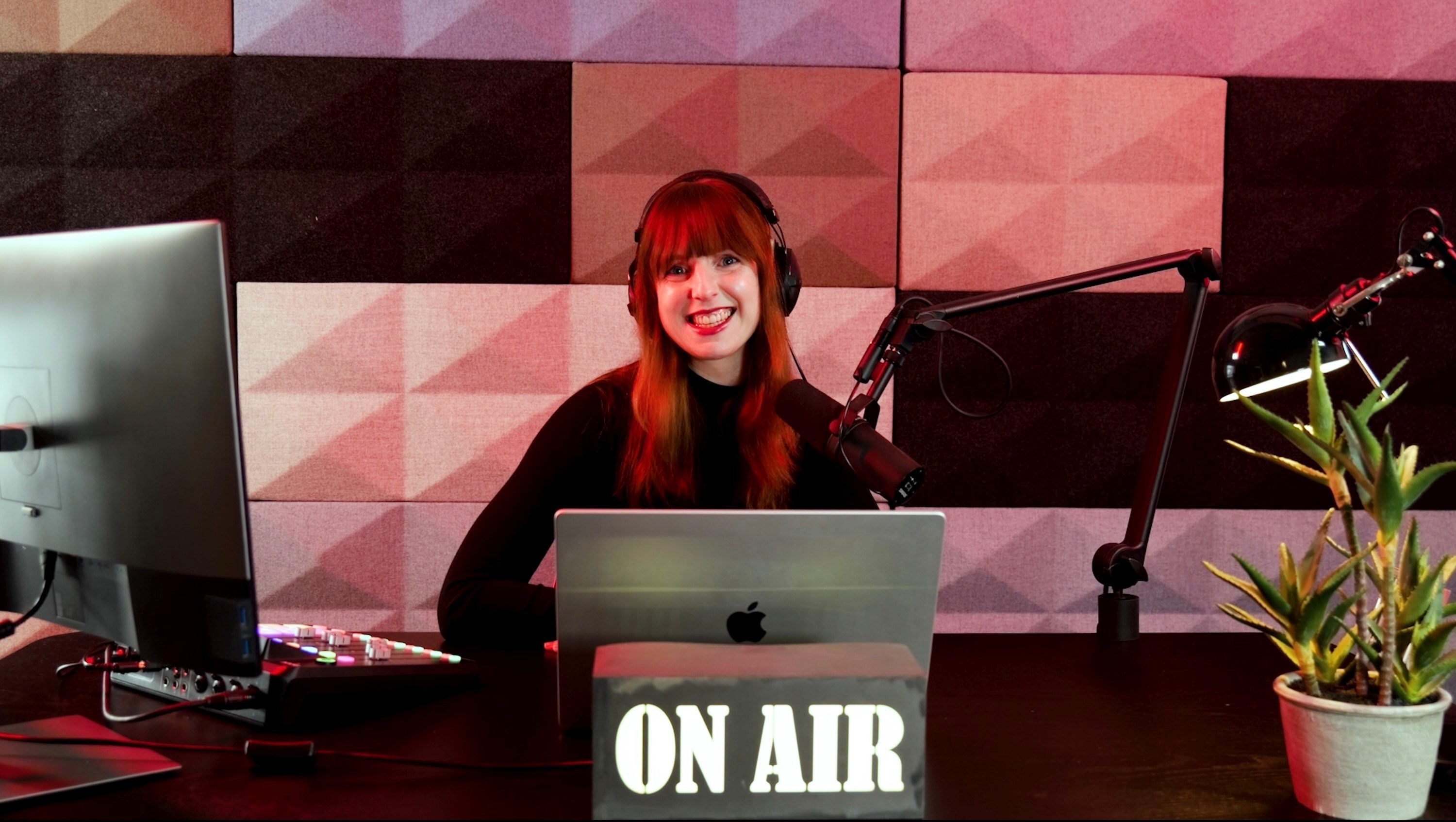Need advice? Let's talk.
Get straightforward guidance from your broadcasting partner. Schedule a call to chat with the team about your radio station.
Book DemoHow to Start Your Own Radio Talk Show
Launch your own radio talk show with this step-by-step guide — from gear and formats to platforms, promotion, and building a loyal listener base.

So, you’ve got opinions, a decent mic, and a burning need to talk. Congratulations, you might be one step away from launching your own radio talk show. Whether you dream of live debates, late-night rambling, or just want an excuse to rant into the void with structure, you’re in the right place.
This guide will walk you through what a radio talk show is, how it differs from a podcast, what platforms to use (hello, Radio.co), what gear you need, and how to get people to listen. Let’s get into it — your mic’s waiting.
What is a radio talk show?
A radio talk show is an audio program built around conversations, commentary, or interviews, usually focused on a specific theme like politics, sports, pop culture, or personal stories. Unlike music-focused stations, talk shows rely on voice: the host’s personality, opinions, and ability to keep listeners engaged.
They can be live or pre-recorded, interactive (with callers and guests) or solo. Some follow a strict format; others feel more off-the-cuff. Whether it’s a heated debate, a niche storytelling show, or a laid-back Q&A, the goal is to keep people listening, talking, and tuning in again.

Radio Talk Show vs. Podcast — What’s the Difference?
Radio talk shows and podcasts can sound similar. Sometimes they’re the same content, just packaged differently. But there are a few key differences:
Radio airs live or follows a set schedule. Podcasts are on-demand — listeners press play whenever they want.
Radio plays on AM/FM or online stations. Podcasts are published to directories like Spotify, Apple Podcasts, or YouTube via a hosting platform.
Most radio shows follow a strict format with breaks, ads, and time limits. Podcasts are flexible — they can be short, long, heavily edited, or unstructured.
Radio often includes real-time interaction, like call-ins or live texts. Podcasts tend to be pre-recorded, with feedback happening after the fact, although this is not always the case.
Once a radio episode airs, it's gone unless archived. A podcast stays online for as long as you want it there.
Can they be the same show? Yes. Many talk shows, like The Breakfast Club or The Daily, are live broadcasts that later get uploaded as podcasts. And something like The Joe Rogan Experience? Technically, it is a podcast, but with the vibe and length of a traditional radio talk show. It’s all about how and where people listen.
5 radio talk shows that will inspire you
Need a little inspiration before you hit record? These radio talk shows prove that great content comes in all formats — opinionated, curious, hilarious, or deeply personal.
1. The Ramsey Show
Broadcast live on 600+ radio stations, SiriusXM, and YouTube, The Ramsey Show is a call-in program focused on real people tackling real financial problems. Host Dave Ramsey delivers tough-love advice with structure, clarity, and zero fluff. It’s a great example of how consistency, a strong host voice, and a simple format can build trust and keep listeners coming back — on radio, online, or wherever they tune in.
2. Fresh Air
Hosted by Terry Gross, Fresh Air is one of public radio’s most respected interview shows. It’s calm, deeply researched, and focused on real and honest conversations. Guests range from actors to authors to politicians, and the tone is thoughtful without being dry. It’s proof that talk shows don’t need to be loud to be compelling. If you want to master the art of asking smart questions, start here.
3. Coast to Coast AM
This late-night radio show dives into the paranormal, conspiracy theories, and fringe science, from UFO sightings to time travel. It’s strange, unfiltered, and has a massive, loyal audience. The takeaway? Niche content works if you lean all the way in. If you’re considering doing something outside the mainstream, this show proves that weird doesn’t just work — it builds cult followings.
4. All Things Considered
A daily news magazine that blends reporting, interviews, and commentary, All Things Considered is polished but approachable. It covers big stories without losing the human angle, and the pacing is clean and deliberate. Start here if you’re building a show around current events or structured storytelling. It’s a lesson in how to inform without overwhelming, and sound professional without sounding stiff.
5. The Marketplace
Marketplace breaks down the economy in a way that makes sense and keeps it interesting. Hosted by Kai Ryssdal, the show covers everything from inflation to the price of eggs, with solid storytelling and a strong host presence. It’s a great example of how to take complex topics and make them feel personal. This is one to study if you’re building a news or explainer show.
Broadcasting: Old School or Online?
Before starting your radio talk show, you must answer an important question: will you go online or take the traditional route?
What are the main differences you need to know about? Traditional radio means getting licensed, working with an established AM/FM station, and sticking to a fixed schedule. It’s also expensive. You’ll need professional equipment, a studio setup, and often a team, not to mention the cost of airtime and regulatory hurdles. There’s less flexibility, and it’s harder to get started without serious backing.
Online radio, on the other hand, is more accessible. Platforms like Radio.co let you launch your own station, stream globally, and stay in control of your content, timing, and format — all without needing a transmitter or massive budget.

1. Define your show and target audience
Before you touch a mic, you need to know what your show is about and who it’s for. Are you tackling the news? Taking live calls? Hosting interviews? Going solo with opinions and commentary? Nail down your format and tone early.
Then get crystal clear on your target audience. And not just age, gender, or location — go deeper. What are they into? What do they worry about? What do they listen to instead of you? This is psychographics: interests, habits, values, and mindset.
Then you’ll need to find the gap. What’s missing in their world? What aren’t they hearing that you could be saying? That’s your lane. Your audience will shape everything from your topics, tone, format, and promotion. Nail this, and the rest falls into place.
2. Plan your production
Production planning isn’t just about pressing record. It’s everything that happens before and after the mic goes on. Start by deciding the basics: Will your show be live or pre-recorded? Will you host solo, with a co-host, or bring in guests? Will episodes be structured with recurring segments or more freeform?
Next, create a run-of-show — a basic episode outline. It could be as simple as: Intro → Segment 1 → Listener call → Segment 2 → Outro. This helps keep things consistent and easier to follow and edit.
You’ll also want to build a content calendar. This is where you map out your episodes in advance: topics, guests, special features, or seasonal tie-ins. It doesn’t have to be complicated — even a simple spreadsheet works. The goal is to avoid scrambling for ideas at the last minute and keep your publishing schedule realistic.
Finally, consider your workflow: recording, editing, uploading, and promotion. If you’re working solo, this might mean batching episodes in advance. If you have a team, define who handles what so production runs smoothly.
Set it up once, and you’ll spend less time figuring things out every week — and more time making the show.
3. Choose your platform and equipment
Where you broadcast will shape everything, from how you record to what kind of gear you’ll need. If you’re going the traditional radio route (AM/FM), be ready for a higher barrier to entry. You’ll need access to a professional studio, broadcasting licenses, and full-scale equipment: mixers, transmitters, antennas, and often a whole team to run it.
Online platforms like Radio.co make things a lot more accessible. You can set up your own internet radio station, go live from your laptop, schedule shows in advance, and stream to a global audience — no transmitter required.
For equipment, focus on getting clean, clear audio. A solid mid-range mic like the Audio-Technica ATR2100x or Samson Q2U works well for beginners. Both connect via USB or XLR, which gives you more flexibility as you grow. If you’re ready to splurge, the Shure SM7B is a studio favorite used by most major creators.
You’ll also need a good pair of closed-back headphones like the Sony MDR-7506, a pop filter to reduce plosives, and an audio interface like the Focusrite Scarlett 2i2 if you're using an XLR mic. A simple setup with the right gear goes a long way. Listeners can forgive a lot, but not bad sound.
4. Promote your show
You can create the best radio show in the world, but what’s the point if no one hears it? Getting people to tune in isn’t about luck but strategy.
Everything you've built (your format, voice, and content) has been shaped around your audience. Promotion is just an extension of that. Figure out where your listeners already spend their time. Are they on Instagram? In Facebook groups? Start there. Don’t try to be everywhere. One or two platforms done well is better than five poorly done.
Think about the kind of content that will grab attention. You can share:
- Audiograms with short, punchy clips
- Behind-the-scenes photos or videos
- Snippets from live shows or interviews
- Countdown posts for new episodes
- Guest quotes or highlights
- Repurposed content from your script or blog
- Listener questions or shoutouts
- Clips tailored for Reels, TikTok, or Shorts
- Polls or questions to spark engagement
And remember: consistency is key. Post regularly, talk about your show often, and keep reminding your audience why they should care. The content doesn’t have to be perfect. You just need to show up.
5. Building a community
Listeners want connection. A loyal audience comes from building something people feel part of, not just something they listen to. When people feel like they know you, they come back. When they feel like they’re in on something, they tell others. That’s how shows grow, not just through downloads, but through trust and word of mouth.
Start by showing up where your listeners are. Respond to messages. Mention them on-air. Ask for feedback or topic suggestions. Shout out their comments. Create space for interaction, whether on social media, email, or live chat during broadcasts. If you’re using a platform like Radio.co, you can even embed a live chat on your station site or run listener call-ins.
You don’t need a huge following. You need the right people to feel seen, heard, and valued. That’s how you turn casual listeners into a real community.
Your Radio Talk Show Starts Here
You don’t need fancy gear or a radio studio to get started. You need a clear concept, the right setup, and a show that speaks to your audience. Whether you’re going live or streaming online, start simple, stay consistent, and keep showing up. The rest will follow.
And if you’re ready to hit the air, Radio.co gives you everything you need to launch, manage, and grow your radio talk show — all in one place.



